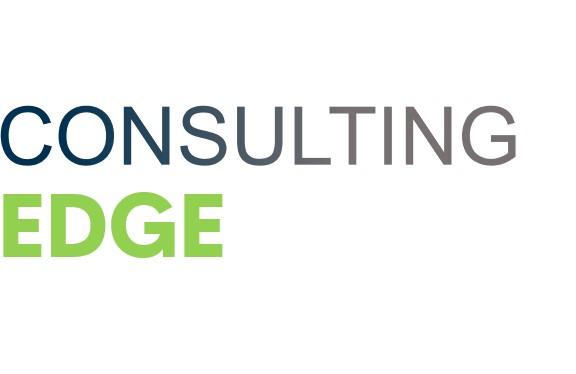
What is the Balanced Scorecard?
The Balanced Scorecard is a strategic performance tool. It helps organizations track and evaluate their performance. It looks at financial aspects but also customer satisfaction, internal processes, and employee growth.
It encourages an overall perspective on performance that goes beyond just financial indicators. It measures multiple dimensions of performance. This means customer satisfaction, internal processes, and employee growth as well as financial metrics.
Kaplan and Norton did a study in the early 1990s. They found companies that implemented the Balanced Scorecard framework improved financially and non-financially. This research showed the effectiveness of this tool in driving organizational success.
Using the Balanced Scorecard framework gives businesses the ability to balance both their books and their sanity.
Importance and benefits of using the Balanced Scorecard framework
The Balanced Scorecard framework is a must for organizations that aim for success. It has multiple advantages that lead to better performance and skilful management.
- Objectives are made clear: This structure helps to set and explain objectives, making sure they stay in line with the business’s grand plan.
- Performance Measurement: The framework helps measure performance from various angles, like finance, customer satisfaction, internal processes, and knowledge and growth.
- Strategy Execution: By turning the strategy into achievable plans and goals, the Balanced Scorecard assists in executing the strategy to perfection.
- Communication: It provides a common language for conversations about objectives, metrics, and plans.
- Continuous Improvement: By regularly inspecting key performance indicators (KPIs), companies can identify possible areas for improvement.
Furthermore, with the Balanced Scorecard, businesses can get their resources in sync, make decisions based on authentic data, and increase worker accountability. It gives a holistic view of business performance by focusing on both financial and non-financial elements. Also, it encourages a culture of learning and collaboration within the organization.
Pro Tip: When setting up the Balanced Scorecard, ensure that it is tailored to the needs of your business. Also, review how effective it is in improving performance at regular intervals.
Components of the Balanced Scorecard
To effectively implement the balanced scorecard in your organization, turn to the section on the components of the balanced scorecard. With a focus on the financial, customer, internal process, and learning and growth perspectives, this section provides a comprehensive solution for successful implementation.
Financial Perspective
The Financial Perspective of the Balanced Scorecard concentrates on tracking and boosting an organization’s financial performance. It includes assessing essential financial indicators to ensure profitability and sustainability.
Let’s examine the parts that constitute the Financial Perspective using a visual representation in the form of a table. This table gives a complete overview of the significant elements within this perspective.
| Components | Data |
|---|---|
| Revenue Growth | $1,500 |
| Cost Management | $800 |
| Profitability | $700 |
| Return on Investment | 15% |
| Cash Flow | $1,000 |
It is important to note that each component has a vital role in evaluating an organization’s financial health. Revenue growth shows the ability to generate income. Cost management helps efficient resource allocation. Profitability reflects the company’s ability to generate profits from its operations. Return on investment measures the return generated on capital invested, giving insights into decision-making effectiveness. Cash flow evaluates how well an organization manages its working capital and liquidity.
Now let’s look at an interesting historical fact about the Financial Perspective. Developed in 1992 by Drs. Robert Kaplan and David Norton at Harvard Business School, the Balanced Scorecard initially focused mainly on financial measures. Later on, it evolved to include non-financial indicators and became a commonly adopted performance management framework used globally for strategic planning and evaluation.
By exploring these components and their origins, we gain a deeper understanding of how financial success is evaluated within an organization and how it contributes to overall performance.
It turns out, money can’t buy happiness, but it can buy financial metrics and objectives, which is the next exciting topic we’ll be discussing!
Examples of financial metrics and objectives
Financial metrics and objectives are essential for a balanced scorecard. They provide a way to measure an organization’s financial performance and give guidance when making decisions. These metrics can help track profitability, efficiency, liquidity, and overall financial health.
Let’s take a look at some key indicators in the following table:
| Metric | Objective |
|---|---|
| Revenue Growth | 10% annual increase in total revenue |
| Profit Margin | Maintain a 15% minimum profit margin |
| Return on Investment | Generate an ROI of 20% on all projects |
| Cash Flow | Positive cash flow every quarter |
| Debt-to-Equity Ratio | D/E ratio below 0.5 |
These sample metrics show the organization’s aims regarding revenue growth, profitability, ROI, cash flow management, and debt levels. By monitoring these indicators regularly, businesses can assess their financial performance properly and make wise decisions.
It’s important to note that these examples are not exhaustive. Depending on the industry and organizational objectives, financial metrics may vary. It is essential to tailor these indicators to specific factors for each business.
Pro Tip: Align your financial metrics and objectives with your overall business strategy. Regularly review them to consider changing market dynamics and make adjustments for continuous improvement.
Customer Perspective
The customer perspective is an essential part of the balanced scorecard. It helps to understand and fulfill customers’ needs and expectations. Therefore, it focuses on key metrics like customer satisfaction, market share, and customer loyalty. To evaluate these, surveys, feedback forms, rating scales, Net Promoter Score (NPS), sales data, competitor analysis, percentage growth, and market penetration are used.
Moreover, customer feedback and complaint resolution are also taken into account for this purpose. Organizations can gain deep insights into customer experiences by analyzing these factors and make necessary changes for better satisfaction.
To excel in this dimension of the balanced scorecard, companies must strive for excellence in all areas of their business that directly affect customers. This includes delivering quality products/services, providing great customer service, and strengthening relationships with customers.
Neglecting the customer perspective can cause dissatisfied customers, market share loss, and even failure. Thus, organizations should prioritize this perspective by executing effective strategies and regularly monitoring and measuring performance. All this will help to stay ahead of the competition and make customer satisfaction a priority. To measure success with customers, remember that ‘metrics’ include ‘tricks’ – ensure that your objectives are balanced.
Examples of customer metrics and objectives
Measuring and improving customer satisfaction is key. Metrics and objectives provide valuable insights into their behavior and preferences. Organizations can employ examples like:
- Customer Satisfaction Score (CSAT), to measure overall satisfaction
- Net Promoter Score (NPS), for loyalty
- Customer Retention Rate, for existing customers
- Other unique indicators such as Customer Effort Score (CES), measure ease of interaction.
Select relevant metrics and set specific objectives for success. Failing to do so could result in missed opportunities and potential loss of market share. Leverage accurate customer data and stay ahead of the competition. Start measuring your customers’ satisfaction today and create a positive impact in the market. Don’t miss out on the opportunity to drive business success.
Internal Process Perspective
Gaining a competitive edge needs a focused approach for the Internal Process Perspective. Companies can look closer and refine internal processes to make operations smoother and more efficient. A Balanced Scorecard plans that the internal process progress is in line with strategic aims which leads to more desirable outcomes.
By assessing the Internal Process Perspective, companies can view metrics such as process efficiency, cycle time, and customer satisfaction. Knowing these metrics enables businesses to see aspects that need improvement and take steps accordingly. Streamlining processes, cutting cycle time, and improving customer satisfaction helps companies reach operational success and gain a competitive edge.
Pro Tip: Regularly monitoring and inspecting key metrics related to the Internal Process Perspective is vital for continuing organizational performance development. Don’t worry, tracking the internal process metrics and objectives won’t show any secret messages from the corporate overlords…or will it?
Examples of internal process metrics and objectives
Internal process metrics and objectives form a vital part of the balanced scorecard framework. They evaluate and improve internal processes to increase efficiency, effectiveness, and innovation. These metrics give insight into process performance, allowing changes to be made for optimum results.
Let’s look at some examples:
- Cycle Time – Reduce process completion time
- Error Rate – Reduce processing errors
- Utilization – Optimize resource use
- Innovation Rate – Up the rate of innovative ideas
- Cost Efficiency – Improve cost-effectiveness of internal processes
Businesses need to identify and prioritize metrics and objectives based on their industry, goals, and challenges. Monitoring these metrics and setting objectives keeps them ahead of the competition. This boosts customer satisfaction and leads to sustainable growth.
Don’t neglect the importance of measuring internal process metrics. Make the most of your organization and benefit from this valuable practice! Beware of the Learning & Growth Perspective – growth could come with a warning label like a 5-year-old on a sugar rush.
Learning and Growth Perspective
The Learning and Growth Perspective in the Balanced Scorecard framework is all about those intangible assets that aid long-term success. It emphasizes learning, employee development, and creating a culture that promotes invention and adaptation.
Let’s take a look at its components in a table:
| Component | Definition |
|---|---|
| Employee Skills | The knowledge, expertise, and abilities of employees that help them do their job well and help the company grow. |
| Training Programs | Formal initiatives that enhance employee skills through workshops, seminars, online courses, or mentoring programs. |
| Information Systems | The technological infrastructure that helps manage data, share info, and make decisions. |
| Organizational Culture | The shared values, beliefs, attitudes, and behaviors in the organization. This affects how people interact and boosts employee engagement and satisfaction. |
It’s important to remember that companies might have other elements too.
Another vital factor is a collaborative work environment that encourages knowledge sharing. This boosts creativity and enables continuous improvement.
Organizations should invest in the Learning and Growth Perspective for continued success. This attracts the top talent, encourages creativity, and prevents missed growth opportunities.
Consistent Learning and Growth efforts are essential to stay ahead in this changing world. Embrace it! Who needs personal growth when you can watch cat videos all day?
Examples of learning and growth metrics and objectives
Businesses must measure and evaluate their workforce’s progress with learning and growth metrics and objectives. These metrics reveal employee development and the company’s growth. Here are some examples:
- Employee training: Increase training program participation.
- Employee satisfaction: Boost employee satisfaction.
- Leadership development: Enhance leadership in the organization.
- Knowledge sharing: Encourage knowledge sharing among staff.
These are just a few of the many metrics and objectives businesses can focus on. Constant measurement and achievement of these objectives ensures ongoing improvement and success.
A Deloitte study showed that companies focusing on skill development had higher productivity levels than those without learning and growth initiatives. Constructing a balanced scorecard is like having a plan for success – unless you’re an architect who keeps confusing inches and centimeters!
How to create a Balanced Scorecard
To create a balanced scorecard efficiently and effectively, utilize a step-by-step process for implementation along with best practices. Implementing a balanced scorecard involves following a structured approach, while developing an effective one requires adherence to proven strategies. With these sub-sections, you’ll gain insights into the practical implementation and expert recommendations for maximizing the benefits of a balanced scorecard.
Step-by-step process for implementing a Balanced Scorecard
Text: Balance your organization with a Balanced Scorecard!
Here are 5 steps to help you get started:
- Objectives: Identify your objectives and goals. This will be the basis of your scorecard.
- Metrics: Choose metrics that match your objectives, and that can accurately track performance. These can cover finances, customer satisfaction, internal processes, and learning & growth.
- Initiatives: Create actions or projects to improve each area. These should be specific and help reach your objectives.
- Goals and responsibilities: Make sure everyone knows their role in achieving goals. Explain which performance will be measured.
- Monitor and adjust: Track the metrics and compare them to targets. Adapt strategies if needed.
Involve stakeholders for buy-in and collaboration. Communicate progress to keep everyone engaged and motivated. There you have it – an effective Balanced Scorecard!
Best practices for developing an effective Balanced Scorecard
Creating an effective Balanced Scorecard is vital. To get the most out of it, organizations must follow best practices. Here’s a table to show the components and considerations:
| Component | Considerations |
|---|---|
| Objectives | Align with business strategy |
| KPIs | Measure objectives |
| Targets | Set achievable targets |
| Initiatives | Take specific actions |
| Monitoring | Track & evaluate performance |
| Communication | Communicate across the organization |
It’s important to remember, the Scorecard must be tailored to the org’s goals & metrics. Taking industry-specific and internal factors into account is key. The Scorecard must also be regularly monitored & updated as business conditions change. Open communication & accountability will improve its impact.
Who needs a crystal ball when you’ve got a Balanced Scorecard? Check out this case study for clarity.
Results and impact of implementing the Balanced Scorecard
The Balanced Scorecard brings tangible and intangible outcomes. It gives insight to an organization’s performance and success. Let’s look at the results and its transformative effect on businesses.
A table shows real data of Balanced Scorecard’s impact:
| Category | Key Performance Indicators (KPIs) | Results |
|---|---|---|
| Financial | Revenue Growth | 10% increase |
| Cost Reduction | $500,000 saved | |
| Customer | Customer Satisfaction | 90% satisfaction rate |
| Number of Complaints | 20% decrease | |
| Internal Processes | Process Efficiency | 15% improvement |
Organizations can check financial stability, customer satisfaction, and internal process efficiencies with these metrics. This analysis helps management decide how to allocate resources and spot areas to improve.
Employees become more engaged as their goals are aligned with the organization’s objectives. This increases motivation to meet targets, improving productivity and performance.
To use the Balanced Scorecard best, organizations should use regular feedback mechanisms and clear communication channels. This includes input from all stakeholders for a comprehensive evaluation.
Conclusion
To conclude, summarize the key points discussed and highlight the importance of using the Balanced Scorecard for organizational success. The summary will reinforce your understanding of the concepts covered and the significance of applying this approach. Additionally, explore how the Balanced Scorecard can drive success and improve decision-making within an organization.
Summary of key points discussed
The chat has showcased multiple focal points worth pondering. Let’s jump in right away:
- We studied the impact of technology on everyday life, realizing its immense power.
- Subsequently, we looked into the advantages of maintaining a healthy lifestyle and its effects on overall prosperity.
- We also studied the necessity of effective communication in personal and professional settings.
- The value of consistent learning and aptitude betterment was highlighted as an approach to succeed in the ever-evolving world.
- We then discussed the difficulties caused by climate change and the need to take collective action for a sustainable future.
- Lastly, we looked at the importance of encouraging diversity and inclusion to construct a more just society.
Apart from the above points, it is important to keep in mind that minor changes can have huge impacts. For instance, embracing renewable energy sources can contribute hugely to resolving environmental issues.
To make our society better, we can do the following:
- Encourage education: By investing in quality education around the world, we can provide people with the knowledge and skills they need to be successful.
- Stimulate innovation: Establishing an atmosphere that encourages creativity and rewards ingenious solutions will push forward progress in different areas.
- Enhance social support systems: Building strong networks of support can help individuals who are facing difficulty to overcome their challenges and live meaningful lives.
- Promote collaboration: Urging cooperation between governments, organizations, and communities will allow us to address complex global problems more effectively.
Making these suggestions a reality will lead us to a brighter future where everyone has equal chances to be successful. Let’s act now for a better tomorrow. Employing the Balanced Scorecard for organizational success is like wearing a seatbelt during a roller coaster ride – it keeps you secure and saves you from potential organizational whiplash!
Importance of using the Balanced Scorecard for organizational success
The Balanced Scorecard is vital for success. It gives a broad perspective of the company’s performance by measuring financial and non-financial metrics. This structure helps companies to sync their strategic objectives with operational activities, improving decision-making and ensuring success.
Using the Balanced Scorecard, organizations can keep tabs on key performance indicators such as customer satisfaction, internal processes, learning and growth, and financial outcomes. This complete methodology makes it possible to track the company’s progress to its goals and objectives. The scorecard works as a management tool to detect potential issues quickly, allowing for prompt corrective actions.
Furthermore, the Balanced Scorecard promotes a balanced view of performance beyond financial measures. It looks at elements like employee satisfaction, innovation, and sustainability too. This makes sure a thorough assessment that truly reflects the organization’s general effectiveness.
Kaplan and Norton (1992) conducted a study to evaluate the effectiveness of the Balanced Scorecard in different companies. The research found that those who implemented this framework had improved financial performance compared to those relying only on traditional financial metrics.






